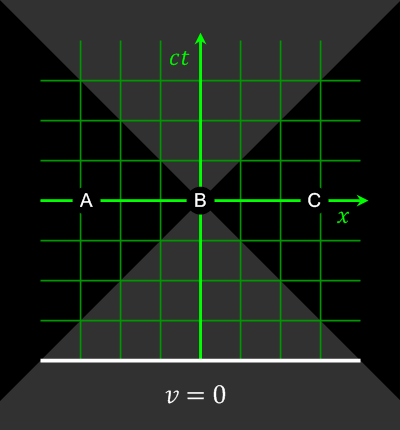Simultaneous
Simultaneity is the concept that simultaneity is not absolute, but dependent on the observer (reference frame). That is, according to the special theory of relativity, it is impossible to say in an absolute sense whether two events occur at the same time if those events are separated in space. Where the event occurs in a single place — for example, in a car crash — all observers whatever their velocity agree that one car crashed with the other at the same time. But where the events are separated in space, such as one car crashing in America and another in China, the question of whether such events are simultaneous is relative; in some reference frames the two accidents happen "at the same time", in others, in a different state of motion, the American crash occurs first, and still others describe the Chinese crash as occurring first.
If we imagine one reference frame assigns precisely the same time to two events that are at different points in space, a reference frame that is moving relative to the first will generally assign different times to the two events. This is illustrated in the ladder paradox, a thought experiment which uses the example of a ladder moving at high speed through a garage.
A mathematical form of the relativity of simultaneity ("local time") was introduced by Hendrik Lorentz in 1892, and physically interpreted (to first order in v/c) as the result of a synchronization using light signals by Henri Poincaré in 1900. However, both Lorentz and Poincaré based their conceptions on the aether as a preferred but undetectable frame of reference, and continued to distinguish between "true time" (in the aether) and "apparent" times for moving observers. It was Albert Einstein in 1905 who abandoned the (classical) aether and emphasized the significance of relativity of simultaneity to our understanding of space and time. He deduced the failure of absolute simultaneity from two stated assumptions:
